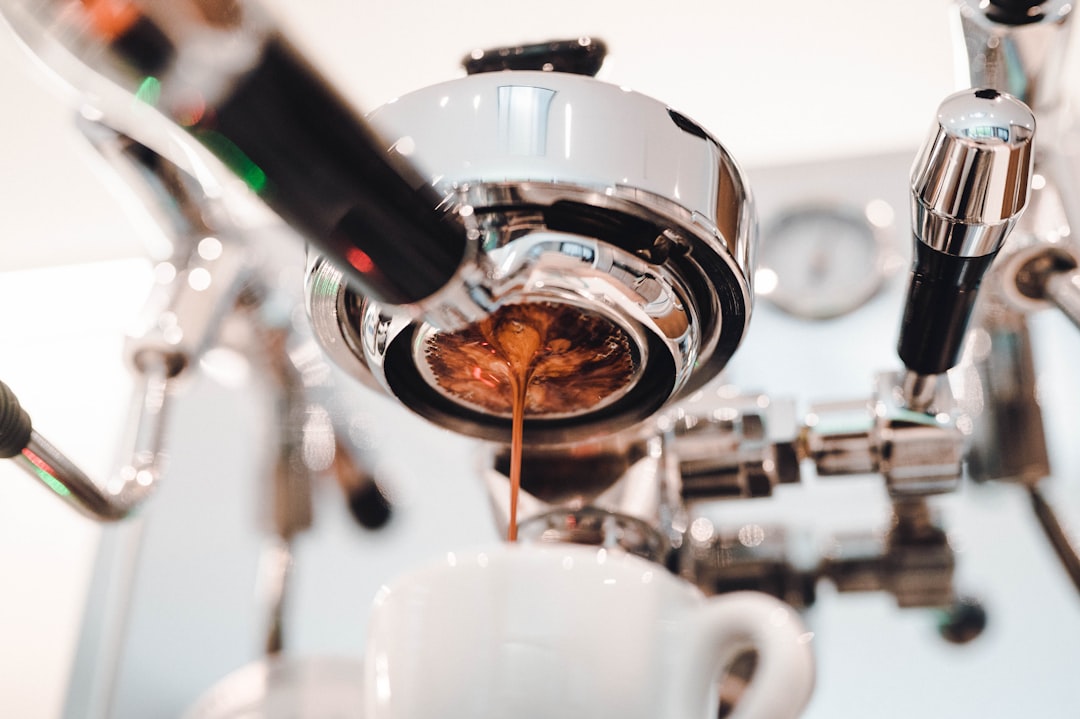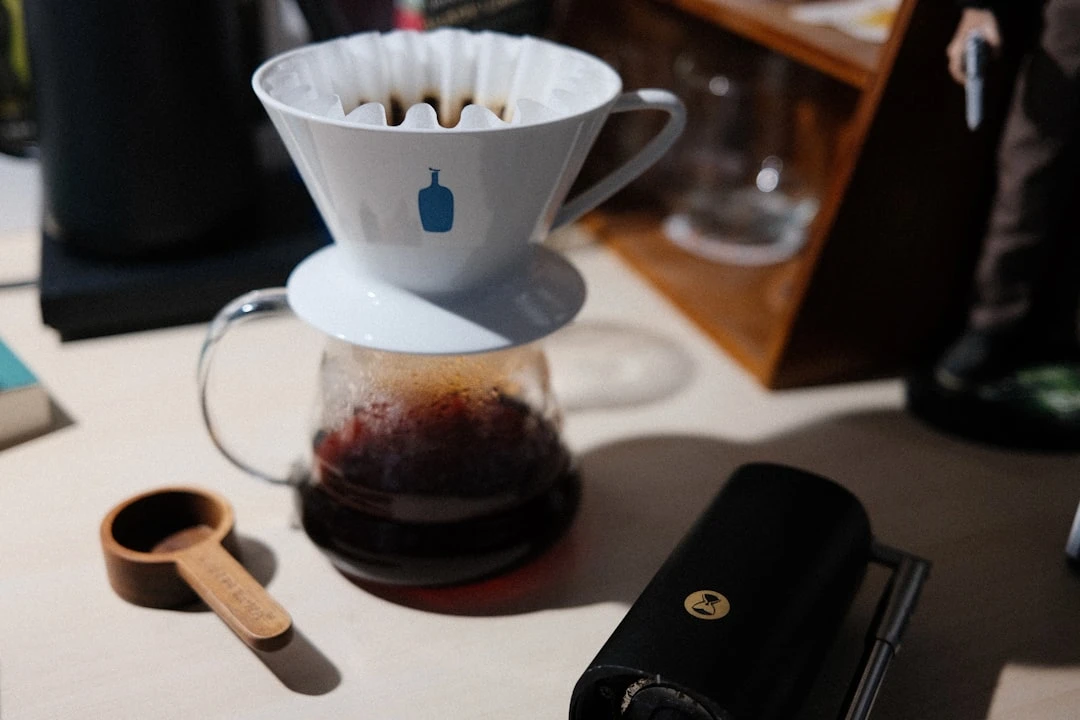The Ultimate Guide to Espresso Romano: Italy's Most Intriguing Coffee Secret

Introduction
Picture this: you're sitting in a centuries-old café in Rome's Trastevere district, and the barista slides a small espresso cup toward you with a curious twist of lemon peel delicately balanced on the rim. That was my first encounter with espresso romano three years ago, and honestly? I thought it was some tourist gimmick! But after one sip of that bright, aromatic coffee where the lemon oils danced with the espresso's rich crema, I knew I'd stumbled onto something extraordinary.
Espresso romano isn't just coffee with a lemon garnish – it's a centuries-old Roman tradition that transforms your entire coffee experience through the magical interplay of citrus oils and perfectly extracted espresso. What started as my curious experiment in a Roman café has become an obsession that's led me down rabbit holes of Italian coffee history, endless kitchen experiments, and conversations with everyone from Roman nonnas to specialty coffee roasters. If you've never heard of espresso romano or dismissed it as an odd combination, prepare to have your coffee world expanded in the most delightful way!
What is Espresso Romano? Understanding Italy's Citrus Coffee Tradition
Espresso romano is traditional Roman-style espresso served with a twist of lemon peel, though the preparation and presentation can vary significantly depending on where you encounter it. At its heart, this isn't about adding lemon juice to coffee – that would be sacrilege to any Italian! Instead, it's about the aromatic oils released from a properly expressed lemon twist that complement and enhance the espresso's natural flavor profile.
During my deep dive into this tradition, I discovered that authentic espresso romano involves either rubbing the lemon peel around the rim of the cup before serving, expressing the oils directly over the espresso, or serving the twist alongside the coffee for the drinker to use as desired. The key is always fresh lemon peel – never dried, never artificial, and definitely never bottled lemon juice.
What makes this preparation so fascinating is how the lemon oils interact with your senses before you even taste the coffee. The bright citrus aromatics hit your nose first, priming your palate for the rich, bold espresso that follows. It's like the lemon acts as an olfactory appetizer that enhances rather than masks the coffee's complexity.
Through my experimentation, I've learned that the quality of both components matters enormously. A mediocre espresso won't be saved by a lemon twist, and old or poorly prepared lemon peel can actually detract from excellent coffee. When both elements are at their peak – freshly pulled espresso with golden crema and aromatic oils from a just-twisted lemon peel – the combination creates something greater than the sum of its parts.
The Fascinating History and Origins of Espresso Romano
My research into espresso romano's origins took me through dusty Italian coffee history books and conversations with Roman café owners whose families have been serving coffee for generations. While pinpointing exact origins proves challenging, the tradition appears deeply rooted in Rome's coffee culture, likely developing sometime in the early-to-mid 20th century.
One compelling theory I encountered suggests that espresso romano emerged during World War II when Romans needed to make the most of limited coffee supplies. The lemon twist helped mask any bitterness from lower-quality beans while adding a bright note that made rationed coffee more enjoyable. Whether this wartime origin story holds true or not, it speaks to the Italian genius for making the best of available ingredients.
Another fascinating aspect I discovered is how espresso romano reflects Rome's broader culinary philosophy of enhancing rather than overwhelming natural flavors. Just as Roman cuisine celebrates simple, high-quality ingredients prepared with precision, espresso romano doesn't try to create a new beverage – it elevates espresso through subtle enhancement.
During my conversations with longtime Roman baristas, several mentioned that their grandfathers always kept lemon peels behind the counter, ready to enhance any espresso that needed "a little something extra." This suggests the tradition may have deeper roots than wartime necessity, possibly emerging from generations of baristas experimenting with ways to perfect their craft.
What's particularly interesting is how this Roman tradition remained relatively localized compared to other Italian coffee innovations that spread globally. While espresso, cappuccino, and macchiato conquered international coffee culture, espresso romano stayed largely within Rome's borders, making it feel like a delicious secret waiting to be discovered.
Traditional Preparation Methods: Mastering the Art
After countless attempts to recreate that perfect Roman café experience, I've developed a deep appreciation for the subtle techniques that make espresso romano exceptional. The preparation method might seem simple, but like most Italian coffee traditions, the devil is in the details.
The foundation starts with pulling a proper espresso shot. I've learned that espresso romano actually demands higher standards than regular espresso because the lemon will highlight any flaws in extraction. Under-extracted shots taste even more sour when paired with citrus, while over-extracted shots become unbearably bitter. Your espresso needs to be perfectly balanced – rich, sweet, and complex with a beautiful golden crema.
For the lemon component, I exclusively use organic lemons that I've washed thoroughly and dried completely. The peel needs to be free of any wax or residue that could affect the oils. I've experimented with different lemon varieties, and while standard grocery store lemons work fine, Meyer lemons create an incredibly sophisticated version with their slightly sweeter, more floral oil profile.
The twist technique took me months to perfect. You want to cut a piece of peel about the size of a quarter, being careful to get minimal white pith which can add unwanted bitterness. Hold the peel over the espresso cup with the colored side facing down, then give it a firm twist between your fingers. You should see a fine mist of oils spray onto the crema surface – that's when you know you're doing it right.
Timing matters enormously. I've found that expressing the lemon oils immediately before serving produces the best results. If you twist the peel too early, those volatile aromatic compounds dissipate. Too late, and you don't get the full sensory impact of the oils hitting the hot crema.
Equipment and Technique: What You Need to Get Started
One of the things I love about espresso romano is that it doesn't require specialized equipment beyond what any home espresso enthusiast already owns. However, I've learned that certain tools and techniques can elevate your results significantly.
For espresso preparation, I use my trusty semi-automatic machine, though I've successfully made espresso romano with everything from a manual lever machine to a high-end super-automatic. The key is consistency in your espresso preparation rather than expensive equipment. If you can pull a shot you'd happily drink straight, you can make excellent espresso romano.
A sharp paring knife or citrus zester is essential for preparing lemon peels cleanly. I've tried various tools, but a simple sharp knife works best for cutting precise, uniform pieces without crushing the peel and prematurely releasing oils. Some enthusiasts swear by specialized citrus peelers, but I find them unnecessary.
The cups matter more than you might expect. Traditional espresso cups work perfectly, but I've noticed that slightly wider cups (like those used for cortados) actually showcase espresso romano better. The extra surface area allows more room for the lemon oils to spread across the crema, creating a more dramatic aromatic impact.
Temperature control becomes crucial with espresso romano. The lemon oils are most expressive when they hit hot crema, so I always warm my cups and pull my shots immediately before preparation. I've also learned to work quickly – the entire process from pulling the shot to expressing lemon oils should take no more than 30 seconds.
Through extensive testing, I've found that grinding slightly finer than usual often produces better results for espresso romano. The lemon oils seem to complement espresso that's extracted with just a touch more intensity, though this varies depending on your bean choice and personal preferences.
Coffee Bean Selection and Pairing Principles
My journey with espresso romano has taught me that bean selection dramatically impacts the final result. Not every espresso blend works equally well with lemon oils, and understanding these interactions has become one of my favorite aspects of this preparation.
Medium to dark roasts generally pair best with lemon oils. The caramelized sugars and developed flavors in darker roasts create a beautiful contrast with bright citrus notes. I've had particular success with blends that include Brazilian beans for body and sweetness, combined with Ethiopian or Colombian beans for complexity and fruit-forward notes that complement the lemon.
Single-origin espressos can be spectacular with lemon oils, but they require more careful selection. Ethiopian beans, with their natural fruit-forward characteristics, create incredible espresso romanos where the lemon oils enhance rather than compete with the coffee's inherent brightness. Guatemalan and Colombian single origins also work beautifully, especially those with chocolate and caramel tasting notes.
I've learned to avoid very light roasts for espresso romano. The bright acidity in light roasts can clash with lemon oils, creating an overly tart experience that lacks balance. Similarly, very dark roasts can become too bitter when the lemon oils accentuate certain flavor compounds.
One surprising discovery has been how espresso romano highlights coffee freshness. Beans that are past their prime become glaringly obvious when paired with lemon oils, while perfectly fresh beans (5-14 days post-roast) create harmonious combinations where each element supports the other.
The grind consistency becomes even more critical with espresso romano. Any channeling or uneven extraction gets magnified by the lemon oils, so I've become obsessive about grinder maintenance and consistent particle size distribution.
The Science Behind the Perfect Combination
Understanding why espresso romano works so beautifully has become a fascinating exploration into coffee chemistry and sensory science. The interaction between lemon oils and espresso involves multiple sensory pathways that create a more complex tasting experience than either component alone.
Lemon peel contains limonene, a terpene that provides the characteristic citrus aroma. When these volatile compounds are expressed over hot espresso, they create an immediate aromatic impact that primes your olfactory system. Since smell contributes significantly to taste perception, this aromatic preparation actually changes how you experience the espresso's flavor.
The oils also interact with the crema in interesting ways. Espresso crema contains emulsified oils and carbon dioxide that help carry flavor compounds. When lemon oils are expressed onto the crema surface, they integrate with these existing oils, creating new flavor combinations that wouldn't occur if you simply added lemon juice to brewed coffee.
From a pH perspective, the mild acidity from lemon oils can actually balance espresso's natural bitterness without adding the harsh sourness that comes from citric acid. The oils provide brightness without significantly altering the coffee's acidity level, maintaining the espresso's fundamental character while adding complexity.
Temperature plays a crucial role in this chemical interaction. Hot crema helps volatilize the lemon oils more effectively, creating that immediate aromatic impact. As the espresso cools slightly, different aromatic compounds become more prominent, creating an evolving tasting experience throughout the cup.
I've also noticed that espresso romano seems to extend the flavor experience. The lemon oils continue releasing aromatics as you drink, creating a more prolonged sensory engagement than regular espresso. This might explain why this preparation feels more ceremonial and contemplative than a quick espresso shot.
Regional Variations and Modern Interpretations
During my travels through Italy and conversations with coffee enthusiasts worldwide, I've discovered fascinating regional variations and modern interpretations of espresso romano that expand far beyond the basic lemon-and-espresso combination.
In Rome itself, I've encountered cafés that use different citrus varieties. Some establishments experiment with orange zest during winter months, creating a warmer, more complex aromatic profile. Others use bergamot peel, particularly in establishments with Calabrian connections, creating something reminiscent of Earl Grey tea but with espresso's intensity.
Northern Italian variations sometimes incorporate other aromatic elements. I've seen Milanese cafés that add a single drop of sambuca alongside the lemon oils, creating an anise-scented version that's particularly popular as an after-dinner drink. Venetian interpretations sometimes use candied lemon peel, though purists argue this fundamentally changes the preparation.
Modern specialty coffee shops have created their own interpretations that respect the tradition while adding contemporary twists. Some use dehydrated citrus wheels as garnish, others experiment with citrus-infused sugars, and I've even encountered versions using citrus bitters expressed tableside.
The most successful modern variations I've tried maintain the core principle of enhancing rather than overwhelming the espresso. A Portland café I visited uses locally-sourced Meyer lemon oils that they express fresh for each cup, while a Melbourne roaster has developed a signature blend specifically designed to pair with different citrus oils throughout the year.
International interpretations have emerged as espresso romano gains recognition globally. Japanese coffee culture has embraced the preparation with characteristic precision, often using yuzu instead of lemon for a more subtle, complex citrus note. Some Australian cafés serve espresso romano with native finger lime, creating tiny citrus caviar bursts that provide textural interest alongside aromatic enhancement.
Troubleshooting Common Mistakes and Perfect Your Technique
Through countless experiments and more than a few disappointing cups, I've identified the most common mistakes that prevent people from experiencing exceptional espresso romano. Understanding these pitfalls has been crucial for consistently creating the transcendent cups that first captured my imagination.
The biggest mistake I see people make is using too much lemon or expressing the oils too aggressively. Espresso romano should whisper citrus, not shout it. When you over-express the oils, you create an oily film on the espresso surface that interferes with the crema and creates an unpleasant mouthfeel. The goal is subtle enhancement, not citrus domination.
Old or improperly stored lemons create terrible espresso romano. I learned this lesson the hard way when I tried using lemons that had been sitting in my refrigerator for two weeks. The oils had degraded, creating a flat, sometimes even bitter addition that detracted from rather than enhanced the coffee. Fresh, room-temperature lemons with vibrant, aromatic oils are non-negotiable.
Timing errors can ruin otherwise perfect preparation. Expressing lemon oils onto cold espresso creates minimal aromatic impact, while waiting too long after pulling the shot allows the crema to dissipate before the oils can properly integrate. I've developed a rhythm where I prepare my lemon peel while the espresso is extracting, then express the oils immediately as the shot finishes.
Poor espresso quality becomes glaringly obvious in espresso romano. The lemon oils highlight every flaw in extraction, grind consistency, and bean quality. If your base espresso isn't excellent, espresso romano will only emphasize its shortcomings. This preparation demands technical precision in your espresso-making fundamentals.
Another common mistake is inconsistent peel preparation. Pieces that are too thick include bitter white pith, while pieces that are too thin don't contain enough oils for proper expression. I aim for peels about 2-3mm thick that include only the colored zest layer.
Serving Traditions and Modern Presentation Ideas
Learning about traditional serving customs for espresso romano has deepened my appreciation for Italian coffee culture's attention to ceremony and presentation. These aren't just aesthetic choices – they're functional elements that enhance the drinking experience.
Traditionally, espresso romano is served immediately after preparation with the lemon peel either expressed tableside or draped over the cup rim for the drinker to use as desired. I've learned that this choice isn't arbitrary – it allows individuals to control the intensity of citrus oils based on their preferences while ensuring maximum freshness of the aromatic compounds.
The traditional cup choice matters more than I initially realized. Classic thick-walled porcelain espresso cups retain heat effectively while providing the perfect surface area for lemon oil integration. The cup's shape also concentrates aromatics, creating a more intense sensory experience as you bring the cup to your lips.
In Roman cafés, I've observed that espresso romano is often accompanied by a small glass of water and sometimes a single piece of dark chocolate. The water cleanses the palate before drinking, while the chocolate can be enjoyed afterward to complement the coffee's richness and the lemon's brightness.
Modern presentation ideas have evolved while respecting traditional principles. Some contemporary cafés serve espresso romano with the lemon peel artfully twisted into decorative shapes, creating visual appeal without compromising functionality. Others provide small dishes of various citrus peels, allowing customers to experiment with different aromatic profiles.
I've developed my own presentation ritual at home that honors both tradition and personal style. I warm the cups, prepare fresh lemon peels just before serving, and always have good water available for palate cleansing. For special occasions, I'll include a small piece of high-quality dark chocolate or a traditional Italian biscotto.
Conclusion
After three years of exploring espresso romano, from that first surprising sip in Rome to countless homemade versions, I'm convinced this preparation deserves recognition as one of coffee's most elegant and sophisticated presentations. It's not just about adding lemon to espresso – it's about understanding how aromatic compounds interact, how tradition informs innovation, and how simple techniques can transform everyday experiences into something extraordinary.
What continues to fascinate me about espresso romano is how it challenges preconceptions while honoring coffee's fundamental character. The lemon oils don't mask or alter the espresso's essential nature; they reveal hidden complexities and create new dimensions of flavor that were always there, waiting to be discovered. It's coffee preparation as revelation rather than transformation.
I encourage you to approach espresso romano with curiosity and patience. Start with excellent espresso and fresh lemons, focus on technique over equipment, and don't be discouraged if your first attempts don't match that perfect café experience. Like all worthwhile coffee pursuits, mastering espresso romano rewards persistence with moments of genuine transcendence.
Whether you're drawn to the historical tradition, intrigued by the sensory science, or simply looking for a new way to experience your daily espresso, espresso romano offers a journey worth taking. Experiment with different beans, try various citrus oils, and most importantly, share your discoveries with fellow coffee enthusiasts who might never have encountered this Roman treasure.
Have you tried making espresso romano at home? I'd love to hear about your experiences, any variations you've discovered, or questions about technique. Share your espresso romano adventures in the comments – let's keep this beautiful tradition alive and growing!
Related Articles

Easy Espresso Tonic Recipe: Make This Trendy Iced Coffee Drink in 5 Minutes
Read More →
Espresso Lungo: The Perfect Balance Between Espresso and Coffee
Read More →

